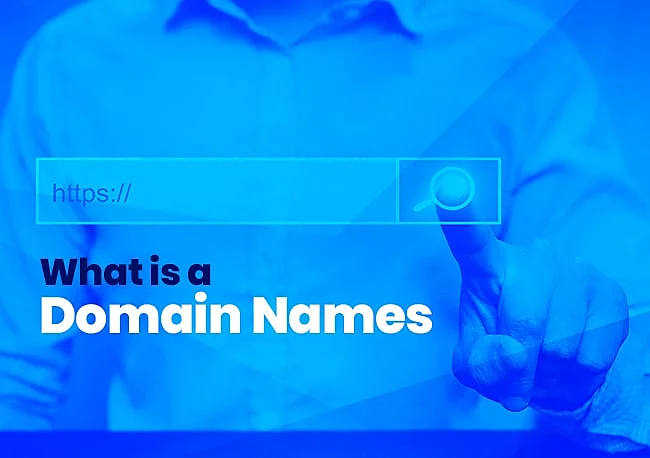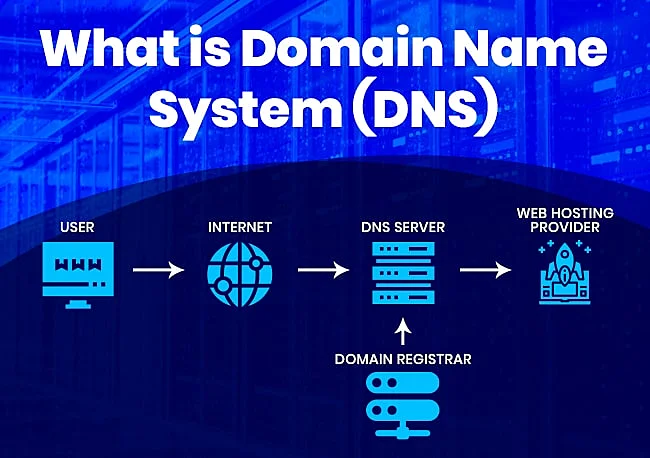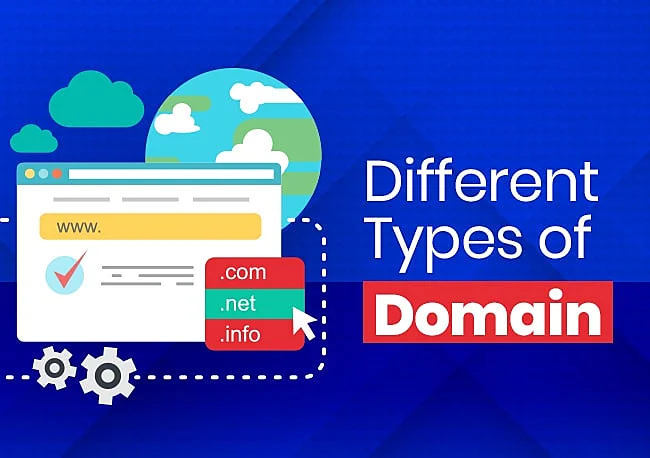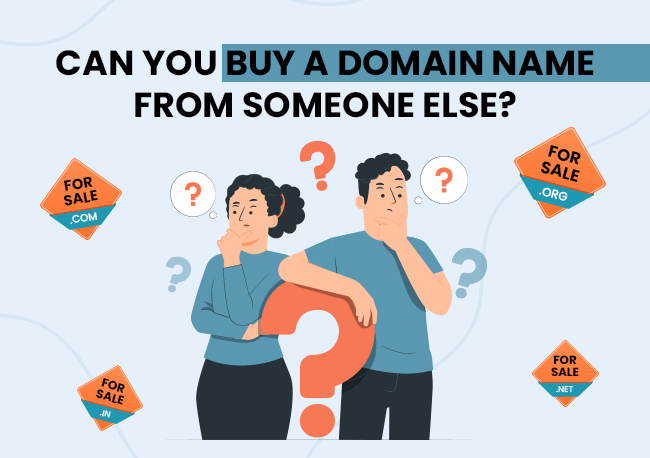Whether you want to switch your existing business online or have a brilliant idea for a startup, a strong online presence is needed. And, a brandable and memorable domain name can play a vital role in making it possible. Usually, when we have to buy a domain, we search domain names on a domain name provider website or contact a domain name provider.
But, buying a domain name requires proper understanding so that you can select the right digital identity for your business.
Before you buy a domain name, you should know what is a domain name and what types of domain names are there to buy? In this article, we shall tell you everything you need to know about the domain name and its kind.
What is a Domain Name?

Your domain is the face of your brand and is essentially your website’s equivalent of physical address. Like a GPS requires a zip code or street address, the web browser also requires a domain address to direct customers to the website.
In simple terms, a domain name is your website name, an identification string that defines your control, authority, and administrative autonomy within the internet. It’s an address that allows your users to access your website.
In a technical term, a domain name is what goes in the HTTPS:// protocol and first “/” (slash) in the URL. For example, in the URL, https://www.hostitsmart.com/, “hostitsmart.com” is the domain name.
A domain name consists of two main elements – one is the website name while the other is domain name extension. For example, in “hostitsmart.com”, “hostitsmart” is the name while “.com” is its extension.
Also Know: Domains – Facts, Concepts, And Myths
How a Domain Name Functions
A domain name is the representation of your website and computer IP address. The device which uses internet connection comes with an IP address. Similarly, a website is also assigned a unique 32-bit or 128-bit string of digits that is known as an IP address.
When you register a domain name, you are given an IP address, while the name you choose is just a shortcut to remember it. The name is created through DNS -Domain Name System (We shall learn more about DNS in the next paragraph.
Domain Name System (DNS)

DNS or Domain Name System is a hierarchical and decentralized naming system that converts your domain name into an IP address. The DNS server is available on millions of servers across the world but acts as a single unified database.
That means when a user types domain name in a browser, the browser will send input to the DNS server where it will find the IP address matching the name and revert to users with the requested result. In short, the Domain Name System (DNS) plays the role of a phonebook for the internet.
Different Types of Domain

Domain names are managed by an organization named Internet Corporation for Assigned Names and Numbers (ICANN) while it is formed by the Domain Name System, based on its rules and procedures.
Any name registered in the Domain Name System and approved by the organization (ICANN) is a domain name while “.com” “.net”, etc, are the standard domain extensions.
Even though “.com” is widely used, there are various other extensions. Let’s discuss them in detail;
1. Top-Level Domains (TLDs)
The TLDs are popularly known as domain name extensions. There are six top-level domains (TLDs) released by the Internet Assigned Numbers Authority in 1985. They are popular and hold the top place in the Domain Name System hierarchy. They are;
- .com: Initially created for commercial purposes, .com became a very popular extension for business, website, and email by the mid-1990s.
- .net: Mainly created for the network, .net is largely used by internet service providers or network technologies and infrastructure companies.
- .edu: As its name suggests, .edu was created keeping educational institutions in mind. “.edu” is now associated with education centers in America. However, other countries also use this extension in conjunction with their country-level domain. For example, if any educational institution buys a “.edu” extension in the United Kingdom, the domain name will be “name.edu.uk”.
- .org: You must have guessed it, right? It was created for organizations, mainly nonprofit organizations. However, it is not restricted to them as you can see even profit businesses, schools, and communities are using this extension at large.
- .mil: It was created for military or defense, mainly for the USA military, though other countries can use the second-level domain, such as Canada uses norad.mil while the UK uses mod.uk.
- .gov: Just like .mil, .gov was created for US federal government agencies while other countries can use this in conjunction with their countries’ subdomain. For example, gov.uk for the UK.
2. Country Code Top-Level Domains (ccTLDs)
Country Code Top-Level Domains (ccTLDs) are the internet top-level domains, reserved for countries with its country code. For example, .uk represents the United Kingdom, .au Australia, .ca for Canada, .in for India and more.
A two-letter internet top-level domain (TLDs) stands for a particular country, sovereign, or territory. For example, If any country wants to use .gov, .mil, etc. it needs to use its ccTLD.
3. Generic Top-Level Domains (gTLDs)
As the name suggests, gTLDs are just a different variation of Top–Level Domains (TLDs). “g” in gTLDs refers to what these domains are intended for – generic. While there are hundreds of Top-Level Domains, the most popular and well-recognized TLDs are known as gTLDs or Generic Top-Level Domains.
For example, extension ‘.edu’ for educational institutions, ‘.mil’ for military, and ‘.org’ for a nonprofit organization.
Even though the number of gTLDs exceeds 1200 as of March 2018, the core group of generic top-level domains consists of;
- .com
- .edu
- .gov
- .int
- .mil
- .net
- .org
These seven are still the most popular gTLDs even after being more than 30+ years old.
Know More: GTLD? What’s That Stuff? And Why Do I Need It?
4. Second-Level Domains (SLD or 2LD)
Second-Level Domains are domain names preceded by top-level domains.
For example, in hostitsmart.com, “hostitsmart” is the second-level domain while “.com” is the top-level domain. Generally, the second-level domains are names of businesses or organizations.
Apart from this, there is also a country code second-level domain (SLD). For example, in “example.co.uk”, ‘example’ is the second-level domain, ‘.co’ is ccTLD and ‘.uk’ is SLD.
5. Third-Level Domains
Third level domains are found to the left of SLD and naturally follow the second-level domain.
Take for example, “www” is the most common and widely used third-level domain, though it can be anything that is written immediately to the left of the second-level domain. Such as, in “global.hostitsmart.com /”, “global” is the third level domain, “hostitsmart” is the second-level domain while “.com” is the generic top-level domain.
6. Subdomains
Subdomains are part of the larger domain or root domain. For example, “east.example.com” and “west.example.com”, will be the subdomains of ‘example.com’.
Understanding which Domain to choose
Selecting a domain name, which is brandable (easy to memorize and pronounce), short, and simple, can help you market your business quickly. However, the final decision should be taken after considering the type of business you are involved in. When you choose a popular domain, you not only get a brandable and memorable domain name but it comes added with several other benefits. Here’s why you should choose a proper domain for your business website;
The right domain name
- Creates a lasting first impression
- Added SEO benefits
- Adds credibility to your business
- Enhances mobility while changing hosts and switching to your in-house server
Know More: How To Buy A Domain Name
Final Thoughts
The omnipresent internet has disrupted the traditional way of doing business, be it retail, health, and medical, banking and finance, fashion, or entertainment sector. Most business owners have taken their offline stores online, and those who haven’t done it yet are scrambling to create an online presence. And, having a valid domain name is one of the elements to achieve business success.
Also Know: WHY DOES YOUR BUSINESS NEED A DOMAIN EMAIL ADDRESS?
Looking for a brandable domain for your business?




